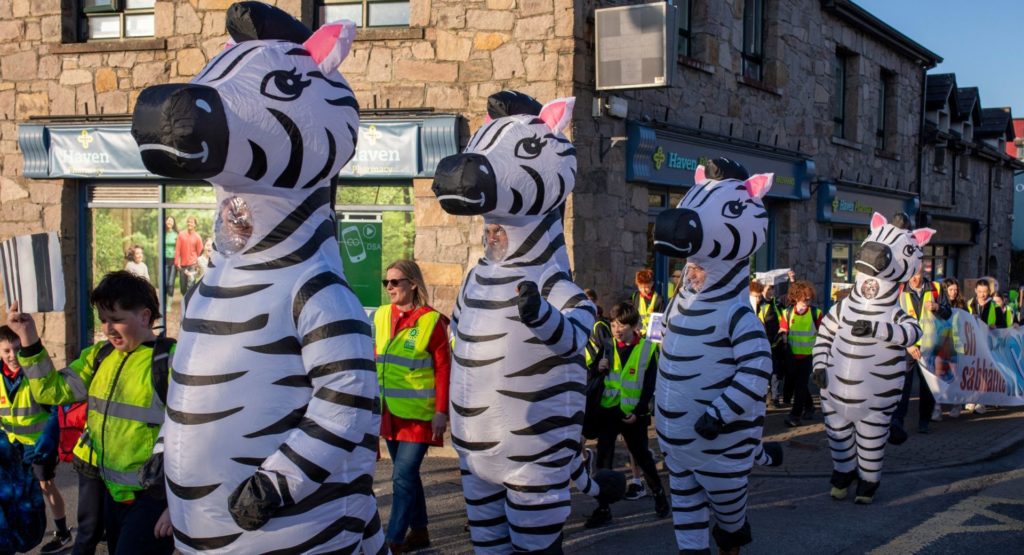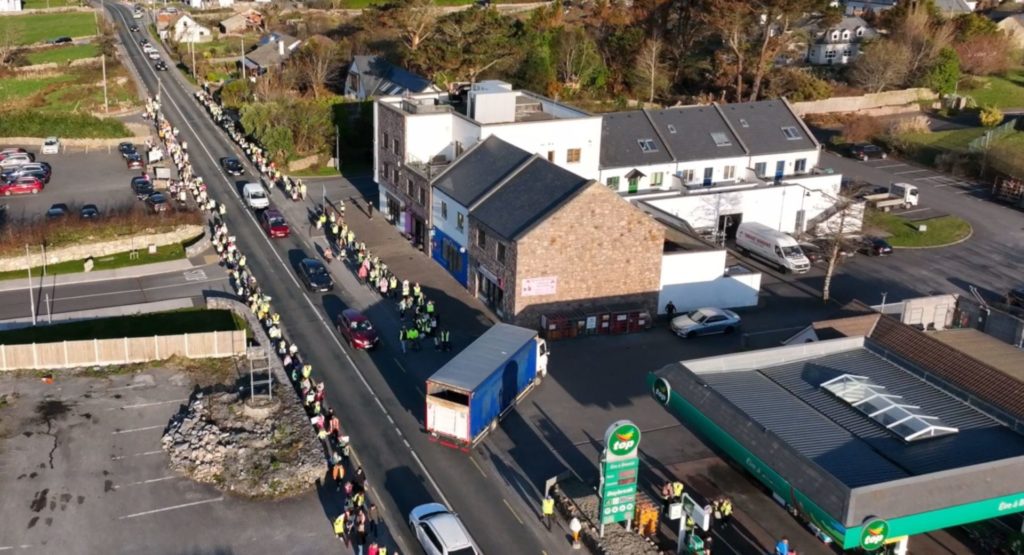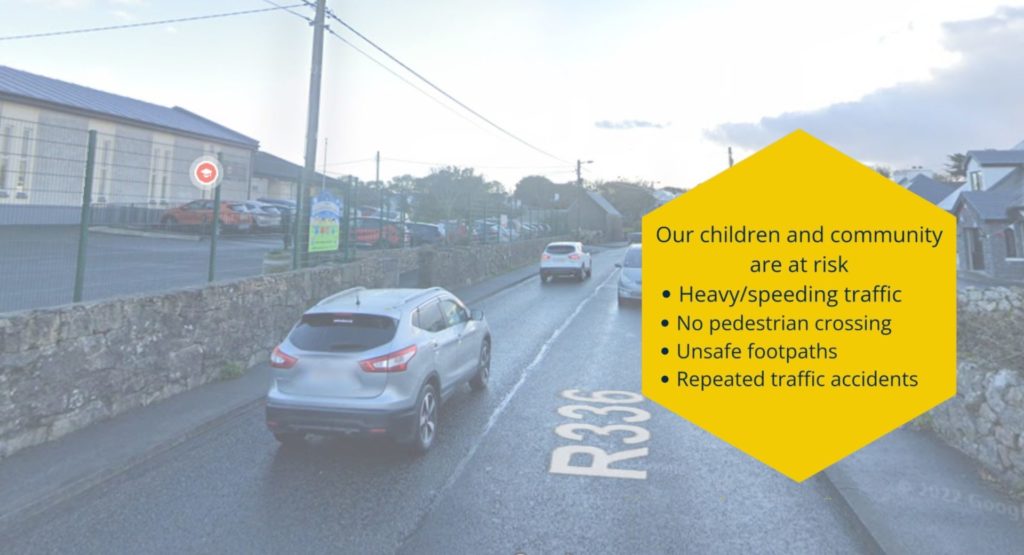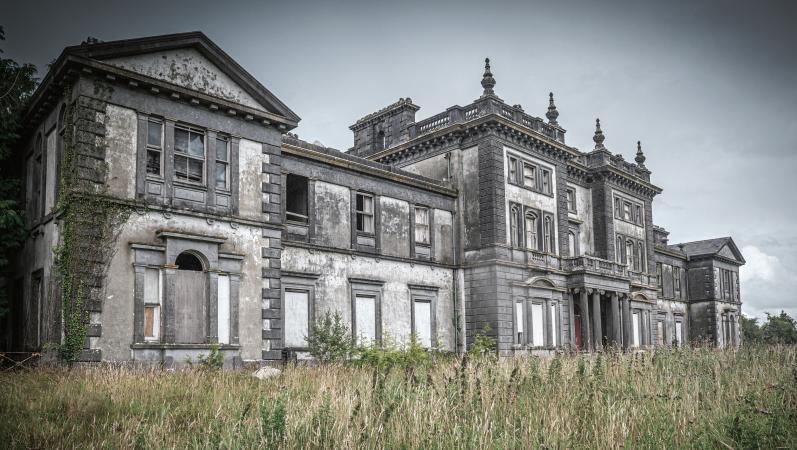Published:
-

-
Author: Judy Murphy
~ 4 minutes read
Arts Week with Judy Murphy
A new book by REBECCA BROWNLIE tells the rich history of this historic mansion and her belief that it can stand proud once more.
This sprawling mansion had been on my bucket list for as long as I could remember, and when I finally saw it with my own eyes, it did not disappoint.
I had seen many images of it online, but they could not compare to actually witnessing it in person. I had also heard rumours that the house was haunted, but all was quiet on my visit, thankfully!
When I delved deeper into the mansion’s history, I was surprised by some of the information I uncovered.
It is a massive 30,000 square feet, with 365 windows, one for each day of the year, making it one of Ireland’s largest houses. The estate it sits in spans 115 acres and includes stables, a greenhouse, a guest house, a church, a mausoleum and several workers’ cottages.
Additionally, it boasts its own train station, which is still in use. The house was constructed in the 1800s by Frederic Trench, the first Baron Ashtown and an Irish politician who had enough influence to have a new train line redirected through his lands to accommodate the station.
A significant staff was needed to manage both the estate and the house. According to the 1901 Census, there were fourteen servants living there.
The mansion underwent renovation in the mid-nineteenth century, carried out by Frederick Mason Trench, the second Baron Ashtown and the nephew of the mansion’s original builder.
His grandson, Frederick Oliver Trench, became the third Baron in 1880 and inherited Woodlawn, along with over £1 million, at the young age of twelve.
After completing his education at Eton, he returned to take over the management of the estate, but decisions he made led to changes that negatively affected the livelihoods of estate workers, causing them to strike and boycott Woodlawn.
Undeterred by this backlash, Trench hired in workers from Scotland instead of relying on the loyal families.
As a staunch unionist, he edited a monthly magazine called Grievances from Ireland to express his views, further alienating himself from the local people. Trench also owned a lodge in County Waterford, which was bombed and set on fire in 1904 – he claimed that this was carried out by disgruntled former staff.
However, local law enforcement believed it was a publicity stunt. Ashtown was tried for orchestrating the incident, but lack of evidence led to the case being dismissed. In 1921 Ashtown was making a lot of noise politically and this made him a serious target for republicans. He received a letter from the IRA demanding his departure from Ireland.
Frederick went into hiding, fleeing to London. The IRA confiscated Woodlawn house, which was used to house Catholic refugees from Belfast; soon afterwards its contents were auctioned off.
Frederick returned after the Irish Civil War had ended, only to find Woodlawn ransacked and vandalised. Despite this, he continued to live on the estate in a reduced capacity until infirmity forced him to move to a nursing home, where he died in 1946.
Just over a year later, Woodlawn was acquired by a family cousin, Derek Le Poer Trench, who lived there until 1973 when, facing financial troubles, he sold the mansion and then tragically took his own life.
Woodlawn has changed hands a few times since then, and the new owner has begun restoration work.
I am thrilled that the mansion is being saved and can imagine it will stand for at least another 200 years.
■ Abandoned Ireland 2 is written by Rebecca Brownlie, who grew up in a small rural village in County Down where she developed a lifelong passion for photography and abandoned buildings. This book captures a variety of empty old buildings – from former asylums to disused shopping centres, from deserted mansions to crumbling cottages – in words and high-quality photography. It’s published in hardback by Merrion Press and is available in all good bookshops, priced at €24.99.
Pictured: Woodlawn House. . . faded glory.
For more, read this week’s Connacht Tribune:
Connacht Tribune Digital Edition App
Download the Connacht Tribune Digital Edition App to access to Galway’s best-selling newspaper. Click HERE to download it for iPhone and iPad from Apple’s App Store, or HERE to get the Android Version from Google Play.
Or purchase the Digital Edition for PC, Mac or Laptop from Pagesuite HERE.
Get the Connacht Tribune Live app
The Connacht Tribune Live app is the home of everything that is happening in Galway City and county. It’s completely FREE and features all the latest news, sport and information on what’s on in your area. Click HERE to download it for iPhone and iPad from Apple’s App Store, or HERE to get the Android Version from Google Play.
More like this:

Plans lodged for apartment block at Dublin Road in Renmore
This article first appeared on Galway Bay FMPlans have been lodged for an apartment block in Renm...

Extended feature – road safety protest in Connemara
This article first appeared on Galway Bay FM800 people have taken part in walking protests across...

Latest collision at Merlin Park Hospital entrance prompts appeal to Transport Minister
This article first appeared on Galway Bay FMThe latest collision at the entrance to Merlin Park H...

800 people take part in walking protests across Bearna, Furbo, An Spidéal and Inverin
This article first appeared on Galway Bay FM800 people have taken part in walking protests across...

Local Senator says Ireland "sleepwalking" through cybersafety epidemic
This article first appeared on Galway Bay FMIreland is "sleep walking" through one of the biggest...

500% increase in passengers using Galway-Mountbellew bus since expansion
This article first appeared on Galway Bay FMThere's been a 500 per cent increase in the number of...

Walking protests in four areas of Connemara's R336 in next hour over 'lethal' road conditions
This article first appeared on Galway Bay FMWalking protests are to take place along four areas o...

‘More than talk needed’ from Ireland on Gaza
By Ciaran Tierney The UN Special Rapporteur on the occupied Palestinian territories urged ordi...

Political trio undertake day-long fact-finding mission to North Galway town
A political triumvirate of a Government TD, an MEP and a local councillor embarked on a tour of a...
Sign Up To get Weekly Sports UPDATES


